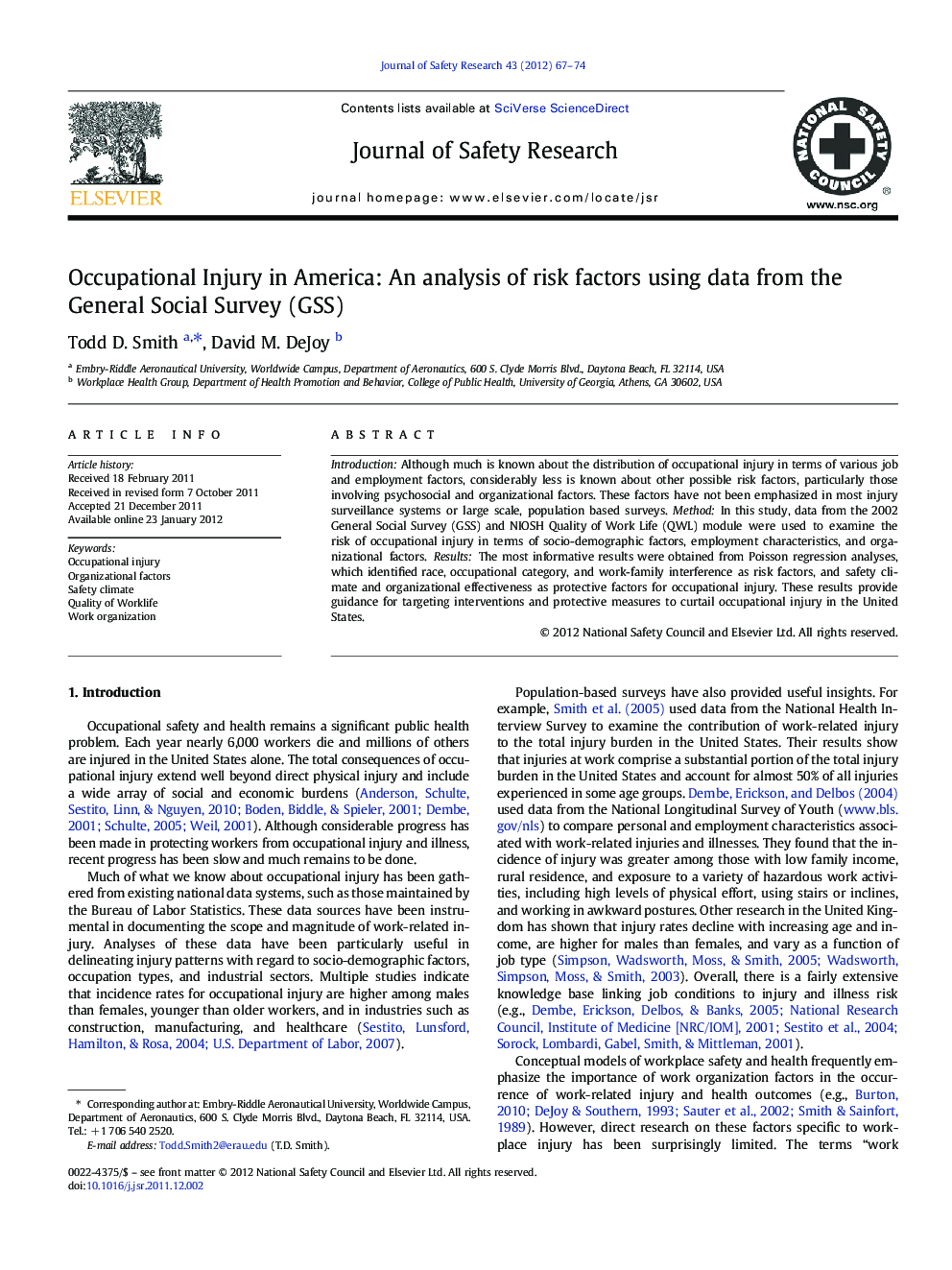| Article ID | Journal | Published Year | Pages | File Type |
|---|---|---|---|---|
| 587455 | Journal of Safety Research | 2012 | 8 Pages |
IntroductionAlthough much is known about the distribution of occupational injury in terms of various job and employment factors, considerably less is known about other possible risk factors, particularly those involving psychosocial and organizational factors. These factors have not been emphasized in most injury surveillance systems or large scale, population based surveys.MethodIn this study, data from the 2002 General Social Survey (GSS) and NIOSH Quality of Work Life (QWL) module were used to examine the risk of occupational injury in terms of socio-demographic factors, employment characteristics, and organizational factors.ResultsThe most informative results were obtained from Poisson regression analyses, which identified race, occupational category, and work-family interference as risk factors, and safety climate and organizational effectiveness as protective factors for occupational injury. These results provide guidance for targeting interventions and protective measures to curtail occupational injury in the United States.
► This study identified risk factors associated with occupational injury ► Data from the General Social Survey and NIOSH QWL module were analyzed ► Race, occupation and work-family interference were risk factors for injury ► Safety climate and organizational effectiveness were protective against injury
